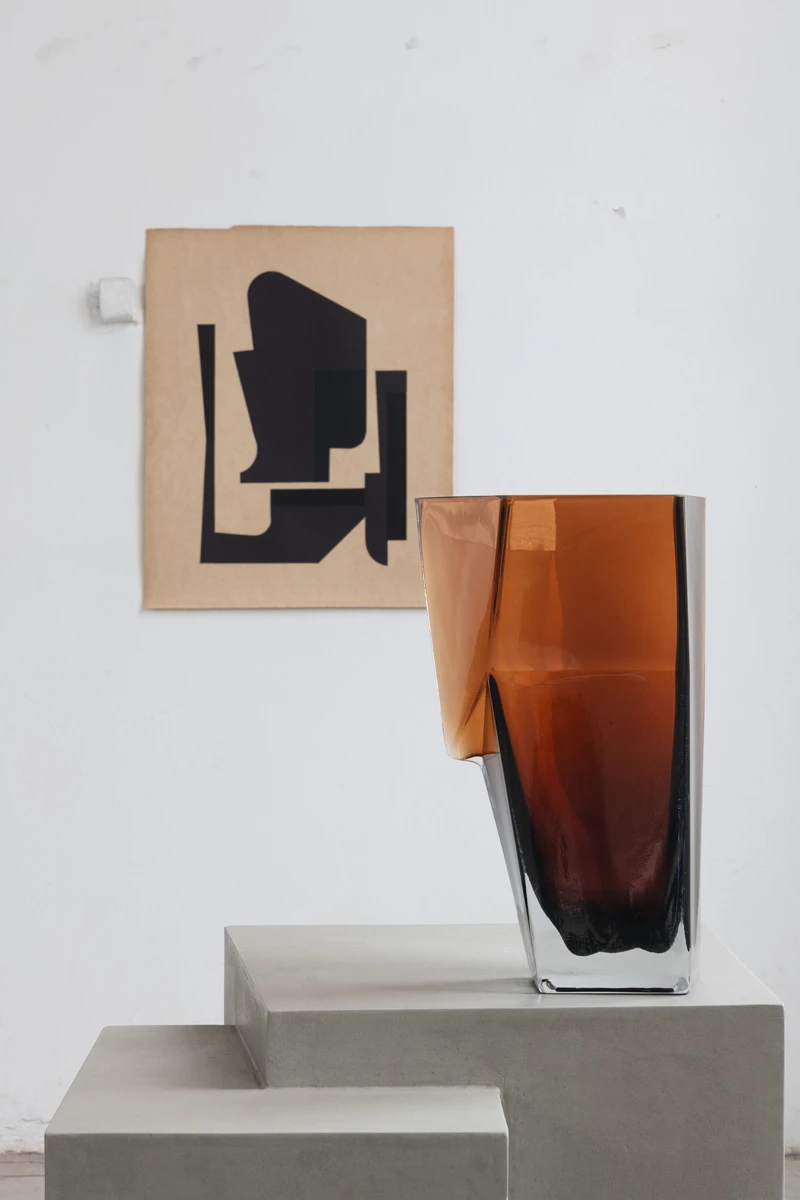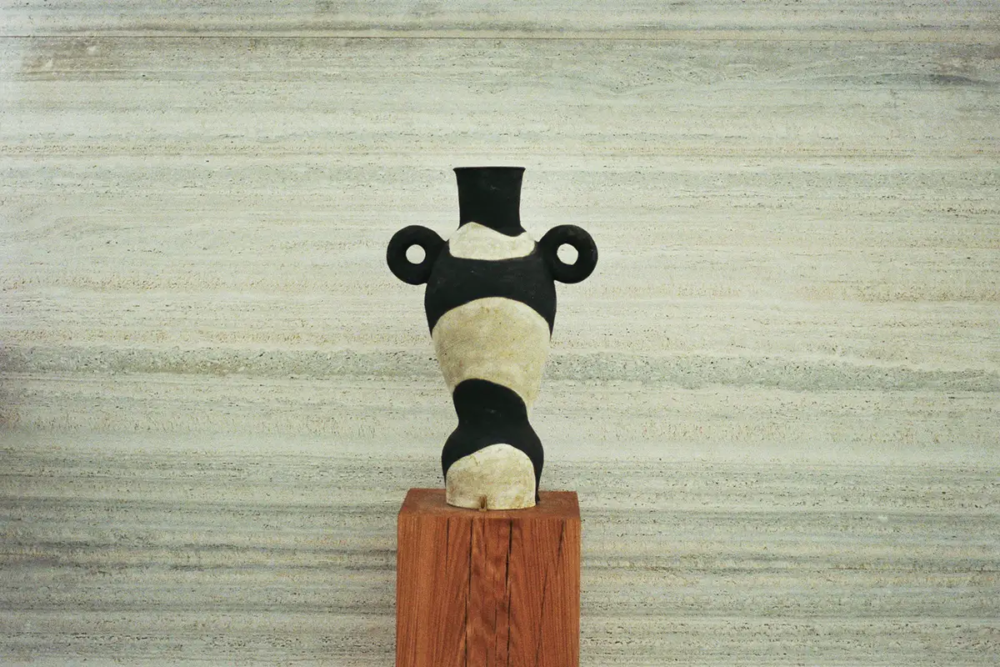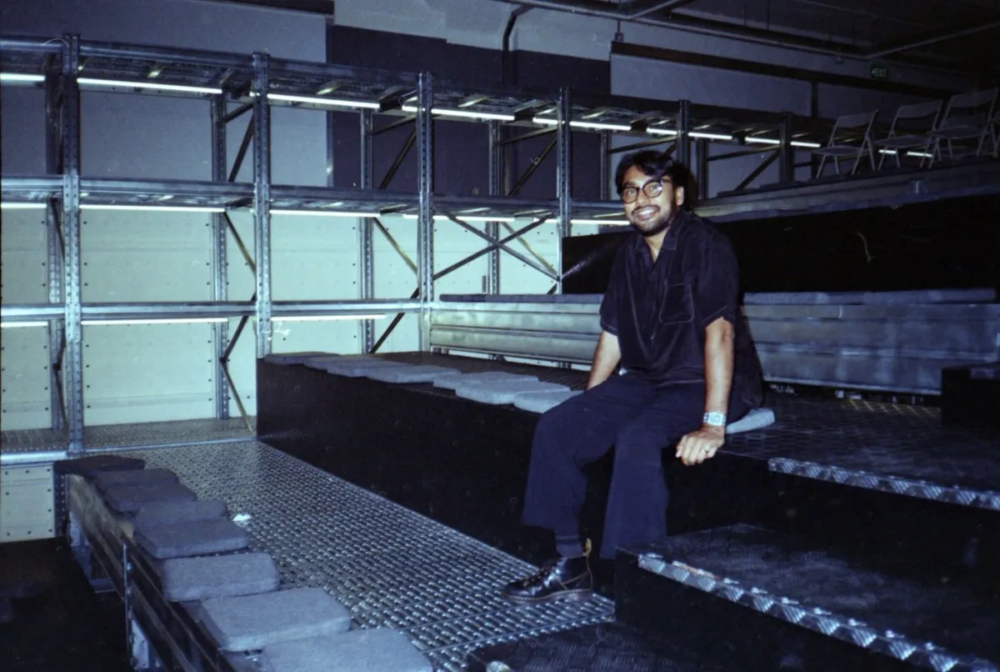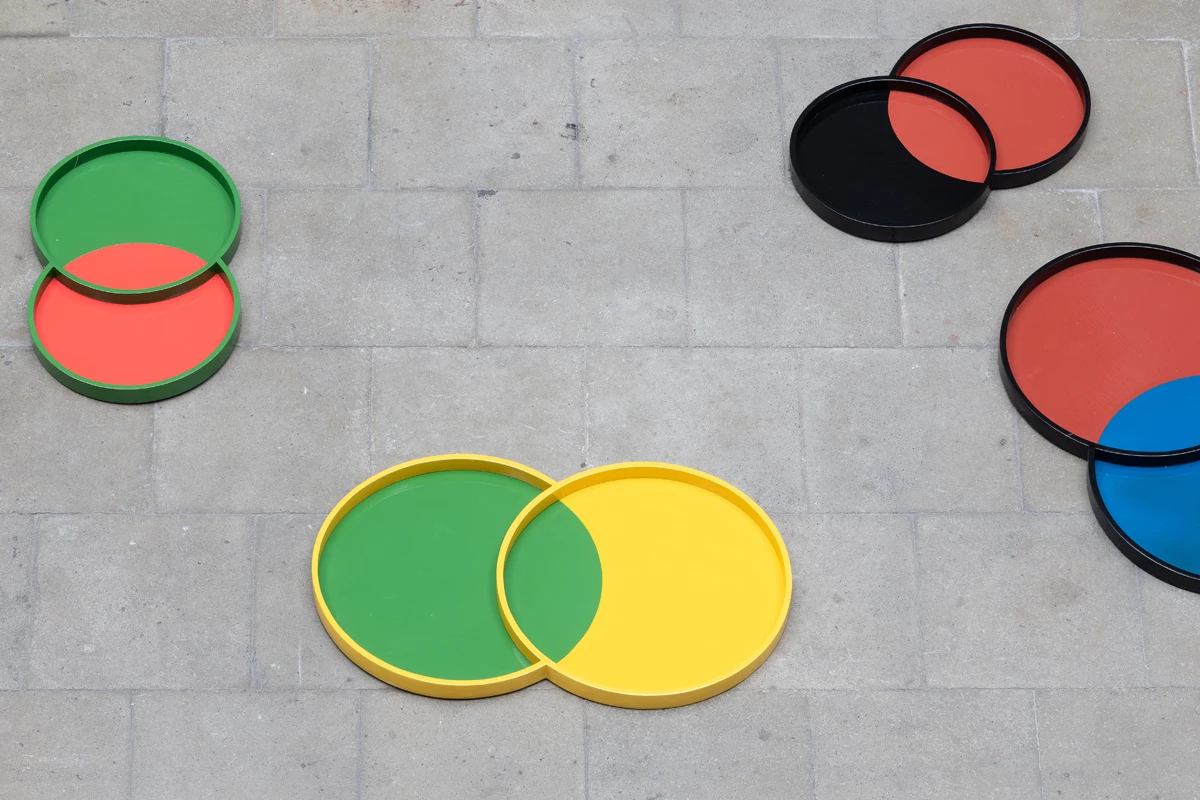
Even a mass-produced object can have a rough soul
The philosophy of Eileen Gray, the forms of Bauhaus, the brushstrokes of Mirò, and the scenography of contemporary theater – in conversation with Belgian Designer Bob Verhelst, the collaboration with Serax
Bob Verhelst: from theater to fashion, from art to design
Verhelst’s approach to the world of design, which he still considers himself a novice of, is the result of a multifaceted career. Initially, he studied fashion at the Royal Academy of Fine Arts in Antwerp with designers such as Ann Demeulemeester, Dries Van Noten, and Martin Margiela. He later decided to specialize as a theatre costume designer, first at the Academy of Fine Arts in Warsaw under the guidance of set designer Jozef Szajna, then at the Ente Morale in Rome. He collaborated with several European theaters, including the Raamtheater in Antwerp, the Burg- und Akademie Theater in Vienna, and the Teater Wielki in Warsaw.
Bob Verhelst then brought his set design experience into fashion and art. He designed shop windows for Hermès, Viktor & Rolf, Cartier, and L’Oréal. He curated the opening event of the MoMu in Antwerp in 2002 and the set design for Margiela les années Hermès, exhibited in 2017 in Antwerp, Paris and Stockholm.
With Serax, Verhelst has shaped a theatrical evocation. Fred is a chair that evokes the image of a throne in a modern stage setting. Here, a monolithic wooden structure supports contrasting cushions made with Belgian fabrics.
Sculptural Confluence Part 1: Bob Verhelst for Serax
Belgian design brand Serax presented the first part of Sculptural Confluence, a collection of interior furniture designed by Bob Verhelst. During of the last edition of Salone del Mobile, Serax set up spaces at the Teatro Arsenale on Via Cesare Correnti, between numbers 7 and 11 – a center for artistic and theatrical initiatives since 1978.
Armchairs, coffee tables, lamps, and trays with geometric shapes feature rough lines and angularity, although there are also rounded elements. Various materials alternate, from wood to ceramics to textiles. The colors are generally matte, ranging from bright hues to earthy tones.
The purpose of the collection is to adopt an approach dear to both Serax and the Belgian designer: functionality that harmonizes with art and aesthetics, without following any particular concept. Bob Serax says: «I really do not like the word “concept”. When I start designing, I just follow my mood, you can say it’s very impulsive. There is no “concept”. Every piece is made at that moment, in that mood. And after all, it becomes a collection».
This desire to create free from preconceptions and predefined standards translates for Verhelst into a rough approach to art and design: «”Rough” for me evokes being courageous, authentic, being honest, to yourself and to your work».
Even the space is undefined, yet Verhelst is convinced that his pieces will end up in the right place: «And with the right people. People who appreciate my work and understand it».
Bob Verhelst: «Fashion is not an art, but I think like a sculptor»
Bob Verhelst considers all his experiences interconnected and complementary: «My theater experience has helped me to work as a scenographer. My work in fashion has helped me to learn how to present a dress in museums». This habit of working with materiality, with fabrics and tangible objects, reflects in his approach to design: «When I design new objects and furniture, I feel that my graphic work is more an influence, I “think” more as a sculptor than as a designer».
Working with Hermès and Cartier taught him to find the right balance between his artistic vision and that of the various brands he dialogues with: «I always learn first what the DNA of that fashion brand is, what the message of the exhibition is or what the message of that new perfume campaign is. Then, once I know all this information and I am familiar with their world, I start designing, but completely in my own way. At the end, automatically both our worlds merge. The identity of the fashion house is recognizable, but also my signature».
However, there are boundaries that remain fixed for Verhelst, such as the one between fashion and art: «I don’t consider fashion as an art. It is a completely different profession. Of course, both worlds come sometimes very close or work together, they even can influence each other. But to me they remain two different professions, two different worlds».
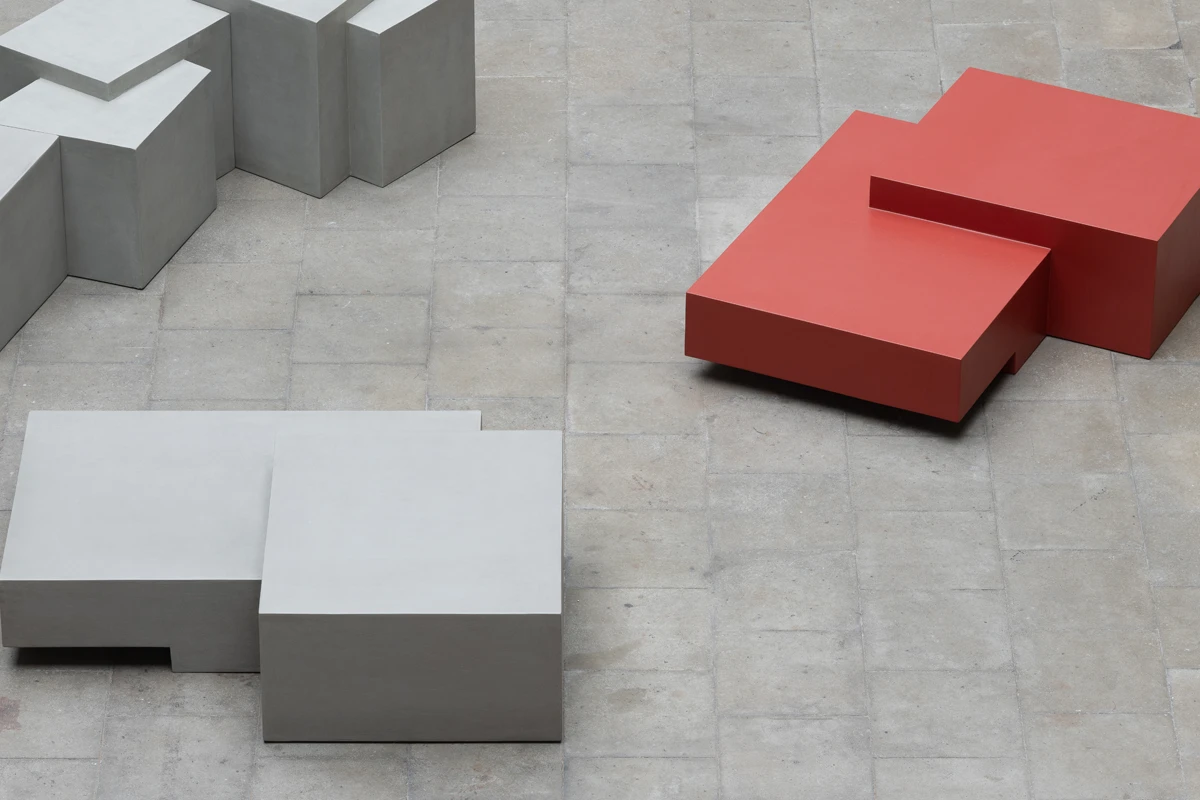

The Lesson of Bauhaus: even mass production has a soul
Verhelst does not follow trends. In his production, not least Sculptural Confluence, there are rather references to past schools and artists. In his multifunctional tables for Serax, the influence of designer Eileen Gray is evident. The Bent and Julius tables, for example, play with volumes and shadows to create the optical illusion of several contiguous tables of different heights. In reality, it is a single piece that lends itself to different uses. Basile can be used both as a stool and as a coffee table.
These pieces of furniture are offered in various shades, from stone gray to charcoal black, through warm nuances like red, orange, and burgundy. The color is applied with dense brushstrokes reminiscent of Mirò’s canvases, another of Verhelst’s models.
The lines and shapes proposed by the Belgian designer then refer to the Bauhaus style, whose philosophy he also embraces. The design school founded in Weimar by Walter Gropius in 1929 aimed to find a compromise between craftsmanship and industrial mass production, which was then beginning to spread. The Bauhaus’s goal was to create objects that combined aesthetics and functionality, art and technology, but were also accessible to the masses. To the modern needs of mass production, the movement responded with a minimalist and essential style made of basic elements, primordial and rational geometric shapes.
In an era where consumerism has led to further growth in mass production, Verhelst is still convinced of the relevance of the Bauhaus lesson. An object can retain artistic value even if it is mass-produced when there is a personality behind it. More than authenticity and uniqueness, Verhelst looks at the movement of the spirit: «An artwork or a designed object has to trigger me at first. If it is a unique painting or a multiple silkscreen, a unique piece of furniture or a mass produced one, if it’s good and moves me, I really don’t care about authenticity».
Theatricality and humor transform everyday objects into art
Verhelst remains a set designer even when working on everyday objects. According to him, it is precisely theatricality, when applied to design, that can transform common objects into works of art. People take on an active role as if they were actors on stage: «I love the idea that you can transform a practical, domestic object such as my serving tray into an artwork. My vases when empty or the little concrete side tables can become an abstract sculpture when you are not using it. I like this possibility to play and it takes the seriousness of “design object” or “artwork” a little bit down».
The trays Verhelst refers to are Yo-to, Cubit, and Endo, part of the collection he designed for Serax. Made of wood, they play with the shapes of the circle and the square to produce different compositions and optical effects. Endo can also be hung on the wall and transformed into a work of art. The person decides how to compose it, thus participating in the creative process.
Design and sustainable manufacturing: the importance of time
In venturing into the world of design, Verhelst is experimenting with different materials: «I am still discovering all the possibilities and different materials. I now learned a lot about ceramics and I want to develop this more. But wood, aluminum, plastic, recycled materials are all new to me and I am eager to learn more about them and work with them».
For sustainable manufacturing in the design world, limiting the discussion to materials is reductive, according to Verhelst. A key role is played by time. Regardless of the material used to make objects, if we continually replace them to keep up with trends, we cannot talk about sustainability.
However, according to the Belgian designer, a change is occurring: «More and more young designers are working again in the “Art & Craft” idea or spirit. For example, Valentin Loellmann in the Netherlands and Rikkert Paauw in Brussels. I hope that people start learning again to buy furniture or objects with the intention to keep them for life. All I have bought since I was seventeen is still in my house. If you choose well and with love, these objects can accompany you for a lifetime. Spend a little more and buy less».
Bob Verhelst
Bob Verhelst is a Belgian designer, artist, set designer and costume designer who worked with theaters, museums and fashion houses, including Hermès, Maison Margiela, Viktor & Rolf, Cartier and L’Oréal. In 2024 he signed a collection of furniture and design objects for the Belgian brand Serax, entitled Sculptural Confluence.
For the launch, Serax selected a series of seating, coffee tables, lamps and multifunctional trays that recall the Bauhaus style and blend the world of design with that of art, giving the user an active role in the creative process.

